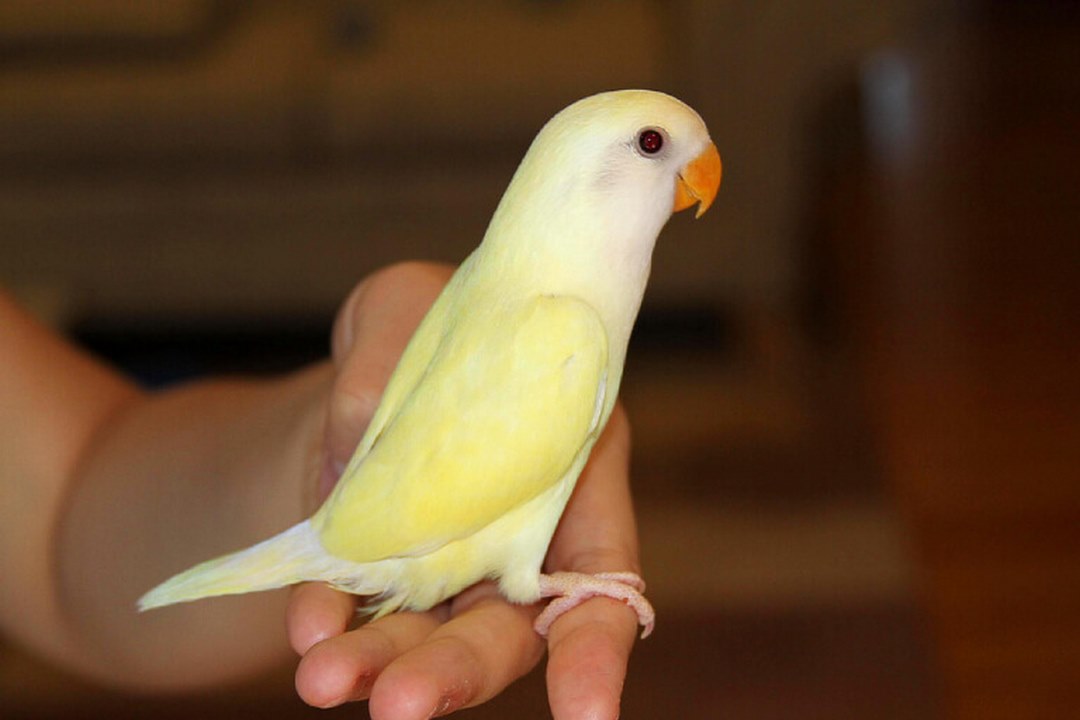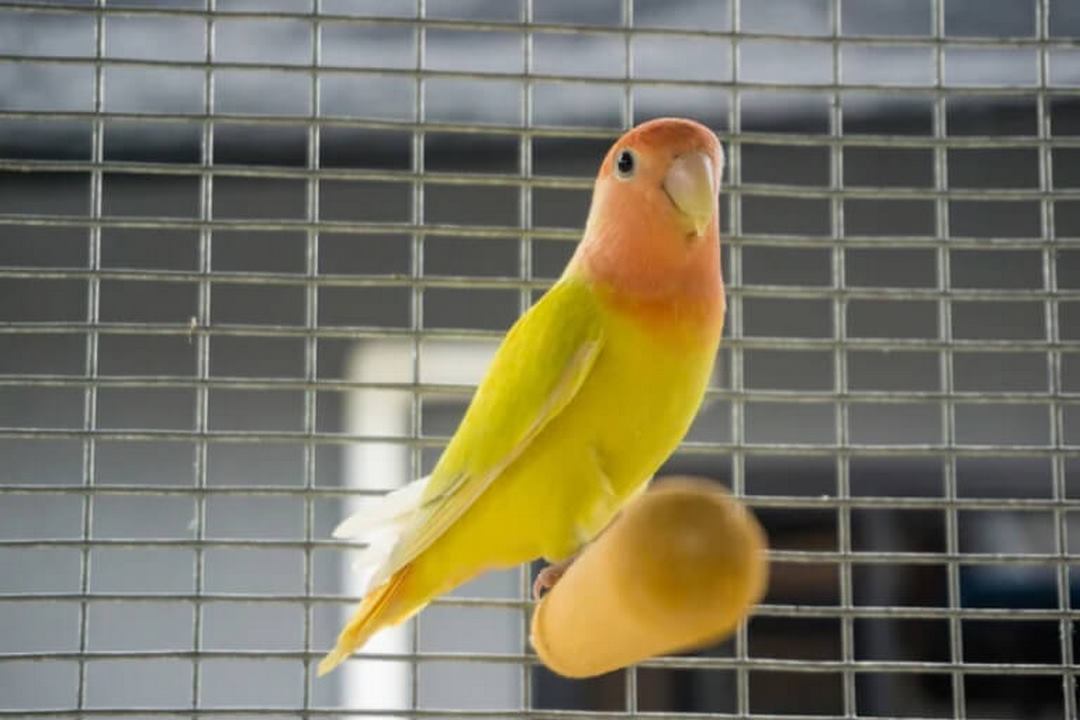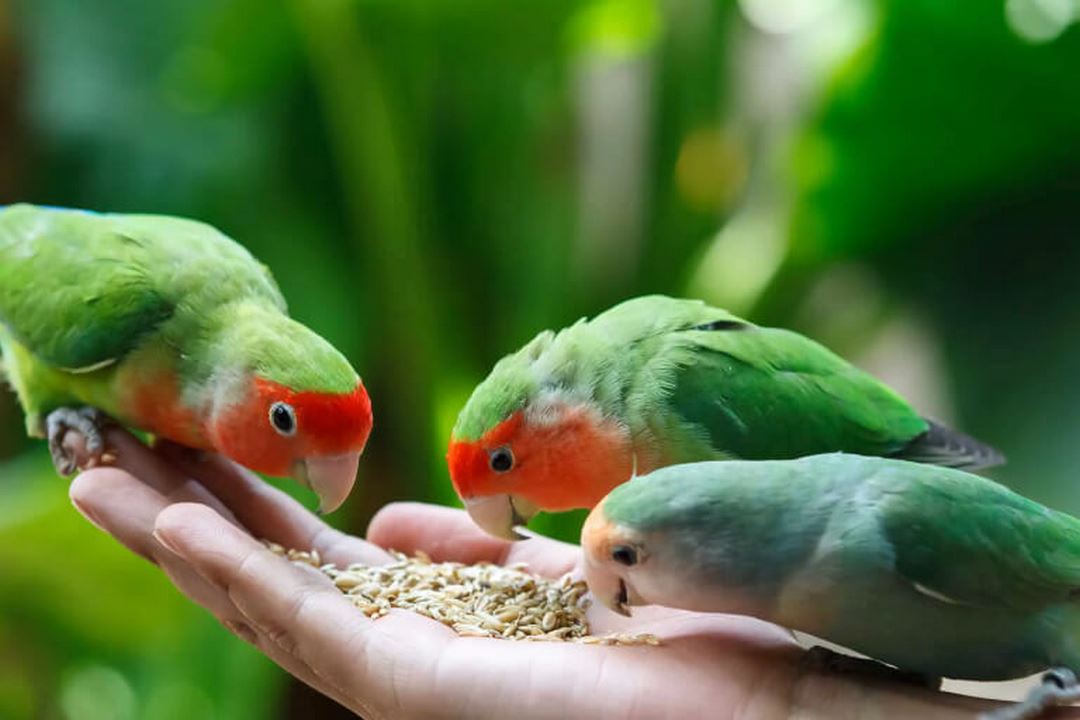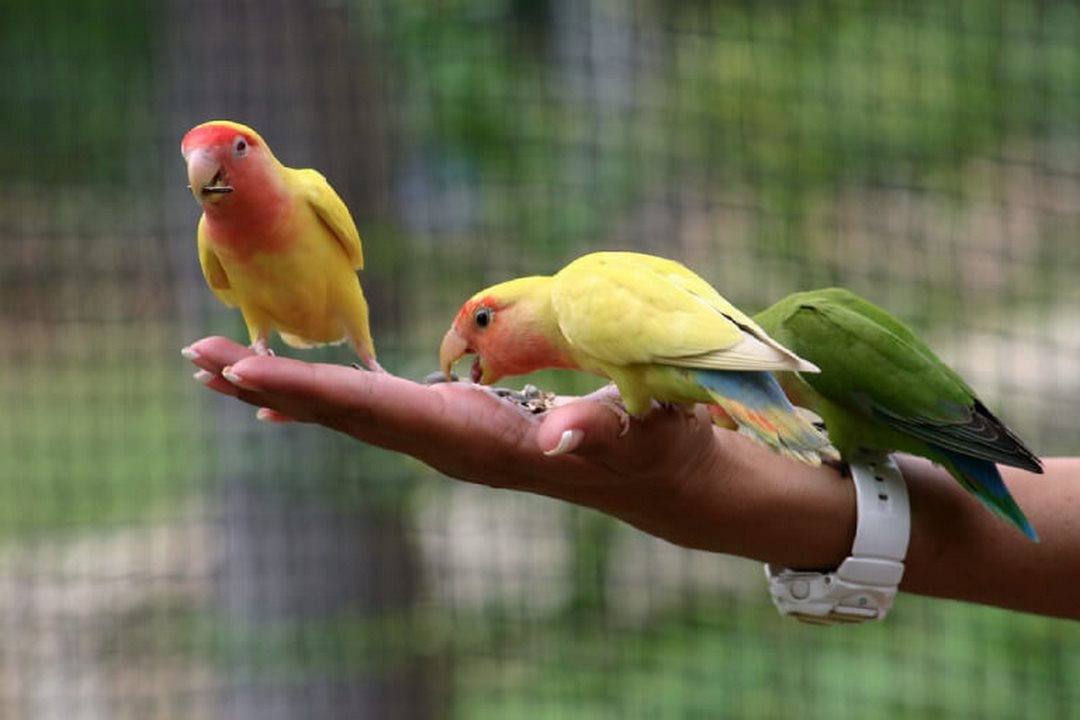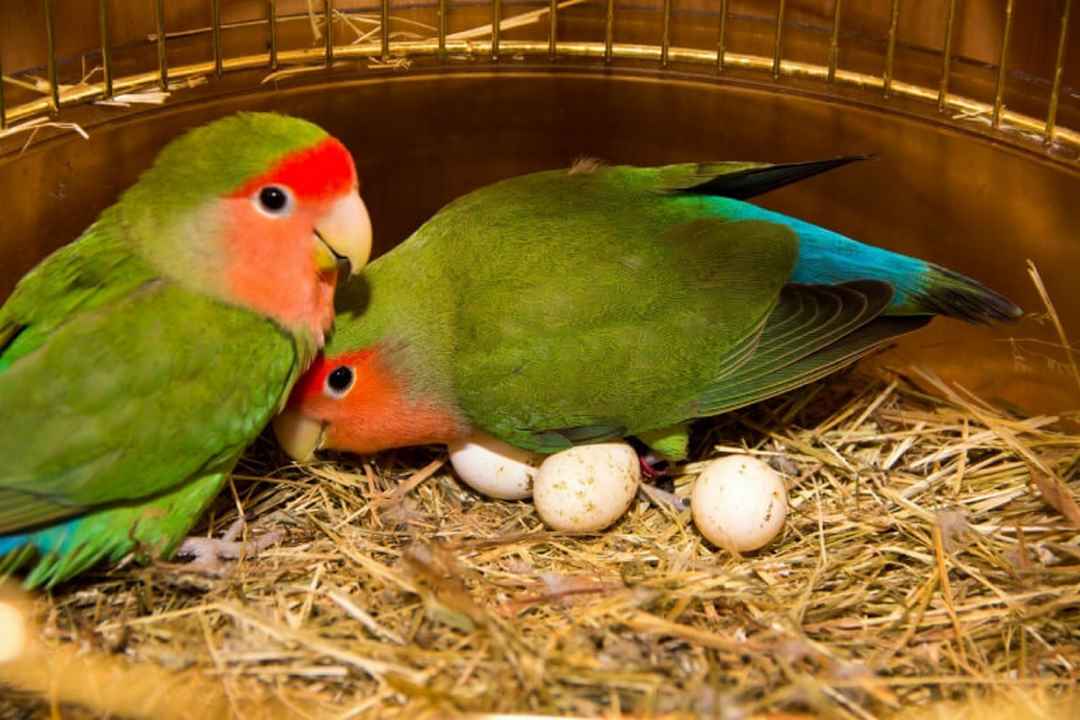The Rosy-faced Lovebird, scientifically known as Agapornis roseicollis, is one of the most popular pet parrot species, similar to the African Grey. This popularity is largely due to how easy they are to care for, their variety of vibrant colors, resistance to illness, long lifespan, and other favorable traits. However, to ensure your Lovebird thrives, you need to understand key aspects like housing, behavior, diet, training, and disease prevention. This knowledge will not only help you raise healthy Lovebirds but also increase your success in breeding them.
| Scientific Name: | Agapornis roseicollis |
|---|---|
| Lifespan: | 15–25 years (in captivity) |
| Length: | 17–18 cm (adult) |
| Weight: | 46–63 g |
Appearance
Lovebirds are small parrots, and there’s very little visible difference between males and females.
- Length: 17-18 cm
- Wingspan: Average 106 mm
- Tail length: 44-52 mm
- Legs and feet: Gray
- Face and neck: Pale pink
Though Lovebirds come in a variety of colors, including some mutations, their feathers are typically a blend of orange, yellow, green, and white.
Their weight ranges from 46-63 grams, similar to Budgerigars (Parakeets).
Behavior and Habits
Breeding Habits:
Lovebirds generally breed year-round, except during the summer months when they take a break. They can lay 6-8 eggs at a time, and it takes about 20 days for the eggs to hatch. The young Lovebirds are cared for by the mother for 35-50 days before they are ready to live independently and forage for food. They reach maturity around six months of age.
Migration Habits:
These birds migrate to find food and suitable living conditions. They typically migrate in large flocks, sometimes numbering in the hundreds or even thousands.
Foraging Habits:
Lovebirds tend to forage in small groups, eating seeds, grains, millet, corn, wheat shoots, and other crops, which has led to them being seen as pests in some areas.
Housing
Proper housing is crucial for keeping Lovebirds happy and healthy. Here are some key factors to consider:
Material:
Lovebird cages should be made of sturdy materials like steel or stainless steel. Wooden cages should be avoided as Lovebirds may chew through them.
Size:
It’s best to opt for a large cage, with a minimum size of 81 x 50 x 50 cm for one pair. If you’re housing a larger group of Lovebirds, consider building an aviary for them.
Layout:
In smaller cages, be mindful of overcrowding with too many accessories. Larger cages should include branches and room for the birds to fly and hop around, helping to prevent stress. The floor of the cage should be lined with sand, chaff, or wood shavings for easy cleaning and odor control. Position the cage on a stand about 1 meter off the floor or hang it at eye level. Ensure the cage is placed in a well-lit, ventilated area, avoiding direct drafts. Keep the cage away from doors and windows where the sunlight can become too intense. At night, cover the cage to keep out drafts.
Essential Items:
Provide a food and water dish, perches, a ladder for play, a bell, and a recording device for training. You’ll also need to include special Lovebird food and other essentials.
Temperature:
Daytime temperatures should be maintained between 18-25°C, with nighttime temperatures around 15-20°C. If your bird is cold, it will puff up its feathers for long periods; if too hot, it will spread its wings to cool off.
Diet
In the wild, Lovebirds eat seeds, berries, fruits, grains, grasses, young shoots, corn, figs, and more. An adult Lovebird typically requires 45-60 grams of food per day.
A well-balanced diet should include a mix of seed mixes, fruits, vegetables, and grains to ensure your Lovebird stays healthy. Here are some suitable foods:
Fruits:
Berries, apples, grapes, pears, bananas, kiwis, watermelons, and figs.
Vegetables:
Spinach, watercress, lettuce, turnip greens, parsley, carrot tops, corn kernels, peas, water spinach, and cabbage.
Nuts and Seeds:
Unshelled peanuts, hazelnuts, walnuts, Brazil nuts, chestnuts, millet, and other seeds.
Calcium Supplements:
Cuttlebone, seashells, and grit can be used to provide extra calcium.
Baby Lovebird Food:
Young Lovebirds cannot eat hard seeds or foods. During this time, feed them a softened food mixture (four times a day). As they grow, they will transition to harder foods.
Cleanliness
Cage Hygiene:
Clean and disinfect the cage using soap and water, or an appropriate disinfectant. Newspaper or chaff can be used to line the cage floor, and it should be cleaned daily to prevent disease.
Cleaning Accessories:
Food and water dishes should be cleaned daily to prevent contamination and illness.
Bathing:
Lovebirds enjoy bathing, especially in hot weather. Offer them a bath 2-3 times a week. They’ll dip their upper body into the water and flap their wings to clean and cool themselves.
Training
To successfully tame a Lovebird, it’s best to start with a young bird. Younger birds are easier to bond with and more likely to develop affection for their human caretakers. Training a Lovebird takes time and patience. Start by speaking softly and moving slowly around the bird. As they grow comfortable, they’ll begin mimicking you. Use food rewards to encourage their behavior.
You can also use a recording device to help teach Lovebirds to mimic words. With time and persistence, your efforts will pay off with a well-trained, obedient bird.
Note: While Lovebirds are intelligent, they require long, consistent training to learn commands and tricks.
Common Health Issues
Here are some common diseases Lovebirds can face:
- Psittacine Beak and Feather Disease (PBFD)
- Avian pox virus
- Bacterial infections
- Parasitic infestations
- Respiratory infections
- Diarrhea
- Coccidiosis
Symptoms to watch for include puffed-up feathers, dull coloring, eyes staying closed for extended periods, watery eyes or nose, excessive sleep, sneezing, abnormal droppings, swollen or lethargic eyes, and increased water consumption. If you notice any of these symptoms, consult a veterinarian as soon as possible.
FAQs
How much do Lovebirds cost?
Can Lovebirds talk?
While Lovebirds can mimic human sounds, they are generally not considered good talkers.
Are Lovebirds popular pets?
Yes, Lovebirds are one of the most popular parrot species to keep as pets.
Although lovebirds are one of the smaller parrot species available as pets, they are incredibly curious and always active. True to their name, lovebirds are known for forming strong, affectionate bonds with their mates, displaying a deep sense of loyalty and attention.

